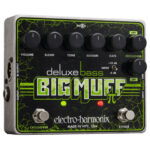The F minor (Fm) chord is more than just a combination of notes on your guitar; it’s a gateway to expressing a rich tapestry of emotions in your music. Often described as conveying gloom, passion, or even a fighting spirit against negativity, the Fm chord is a powerful tool for any guitarist looking to add depth and complexity to their playing.
While it might not be as ubiquitous as major chords or even some other minor chords, the Fm chord is a valuable addition to your chord vocabulary. Learning to play it opens up a world of musical possibilities and allows you to tap into a unique emotional resonance. Let’s explore different ways to play the Fm chord and discover some popular songs that feature its distinctive sound.
Getting Your Fingers Around the Fm Chord: A Beginner-Friendly Approach
For guitarists of all levels, especially beginners, barre chords can initially seem daunting. However, the most common way to play the Fm chord is a fantastic entry point into barre techniques, and it’s surprisingly accessible even for those with smaller hands. This particular voicing of the Fm chord focuses on the higher strings, making it easier to manage and perfect your barre.
In this version, you’ll be using your index finger to barre across the first fret of the G, B, and high E strings. It’s crucial to avoid strumming the lower A and low E strings for this voicing to sound its best.
Here’s a breakdown of the finger placement:
- Index finger: Barre across the 1st fret of the G (3rd), B (2nd), and high E (1st) strings.
- Ring finger: 3rd fret of the D (4th) string.
Strum the F minor chord from the D string downwards, ensuring you avoid the lower A and E strings for a clear and resonant sound.
Deconstructing the Fm Chord: Unveiling the Notes
The F minor chord, at its core, is a triad – a combination of three notes that work harmoniously together to create its characteristic melancholic yet compelling sound. These notes are:
F, Ab (A flat), and C
When these notes are played together, they create the F minor chord, a sound that resonates deeply and evokes a range of emotions. Understanding these constituent notes can deepen your appreciation for the chord’s construction and how it functions within music theory.
Fm Chord in Action: Iconic Songs Across Genres
The F minor chord, despite its sometimes somber character, appears in a diverse range of musical genres and iconic songs. Its ability to inject emotional weight makes it a favorite for songwriters looking to add depth to their compositions. Let’s explore some examples across pop and rock music:
Pop Sensibilities and the Fm Chord
In Toni Braxton’s timeless hit, “Breathe Again,” the Fm chord plays a crucial role in conveying vulnerability and heartache. Beneath the smooth pop surface, the harmonic structure, enriched by the Fm chord, amplifies the song’s emotional intensity.
Diana Ross and the Supremes, known for their soulful ballads, effectively utilize the Fm chord in “Stop! In the Name of Love.” The chord’s inherent gloominess perfectly underscores the song’s themes of heartbreak and pleading.
Even Disney soundtracks aren’t immune to the Fm chord’s emotional pull. Auli’l Cravalho’s powerful performance of “How Far I’ll Go” from Moana leverages the Fm chord to express longing and a yearning for something beyond the current situation. The chord enhances the narrative of overcoming resentment with hope.
Rock Anthems and the Minor Key
Oasis’s classic, “Don’t Look Back in Anger,” immediately establishes its tone with opening piano chords that heavily feature the F minor. The chord contributes to the song’s atmosphere of regret and reflection, while simultaneously hinting at a sense of optimism found in memories.
Madness’s 80s hit “Our House” provides a contrasting example. Here, the Fm chord is skillfully used to add a touch of melancholy and depth to an otherwise upbeat and bouncy melody, showcasing the chord’s versatility beyond purely sad contexts.
The Pixies, masters of minor key exploration, arguably highlight the somber quality of the Fm chord best in their iconic song, “Where Is My Mind.” The song’s haunting and introspective mood is deeply intertwined with the emotive nature of the Fm chord.
These examples are just a starting point. The F minor chord’s versatility makes it suitable for countless musical contexts. Experiment with mastering the Fm chord in these songs and try incorporating it into your own playing and songwriting.
To expand your chord knowledge and guitar skills further, explore Fender Play’s extensive chord library. And if you’re ready to embark on a structured guitar learning journey, sign up for a free Fender Play trial today.

